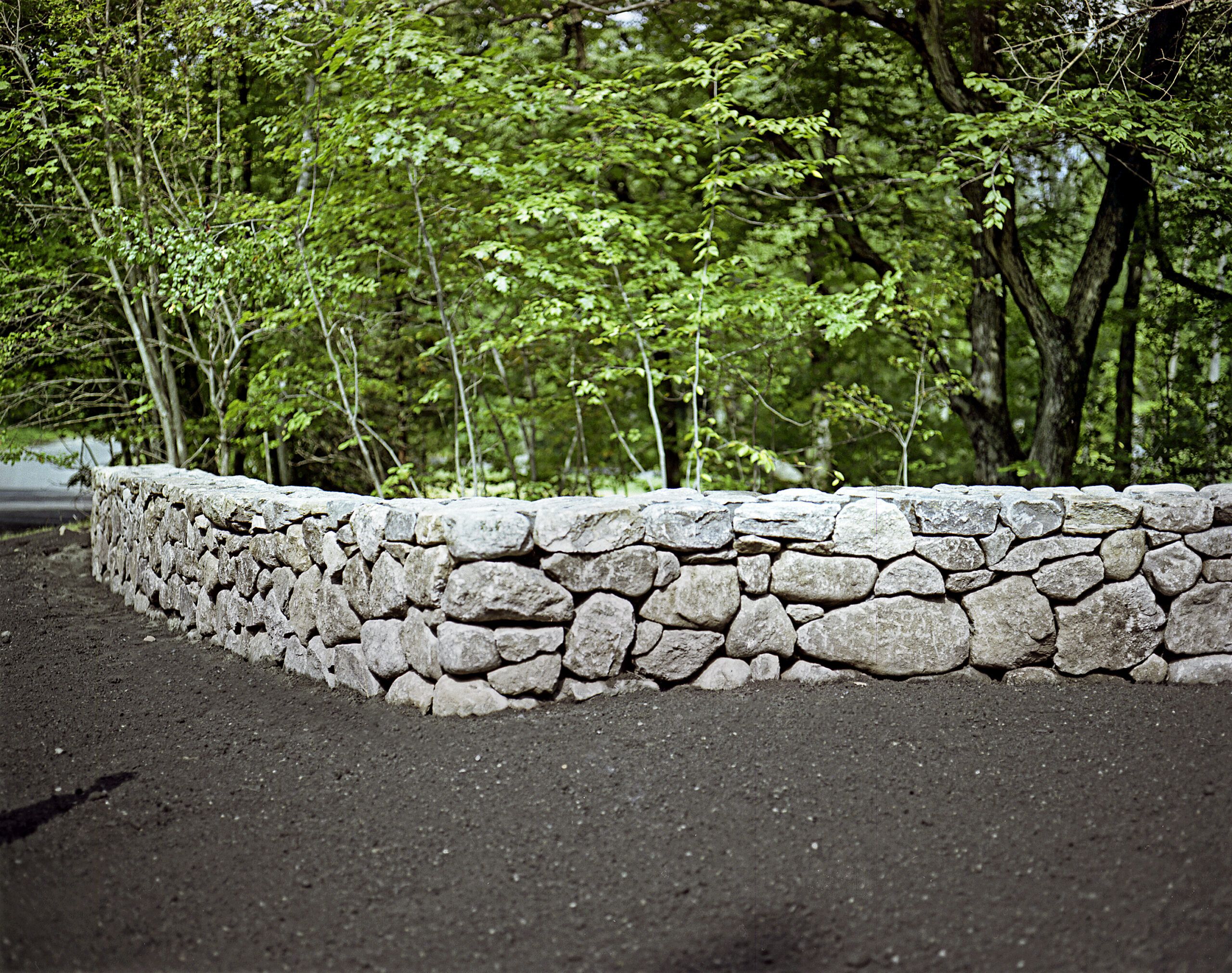Project details
Skill
Cost
Estimated Time
Building a stone wall is a rewarding project that can add beauty, functionality, and value to your property. Whether you’re looking to create a boundary, add visual appeal to your landscape, or construct a retaining wall, this guide will walk you through the process of building a durable and attractive stone wall.
Planning Your Stone Wall Project
Proper planning is key to a successful stone wall project. This phase involves assessing your site, calculating the materials you’ll need, and ensuring compliance with local regulations.
Assess Your Site
Begin by evaluating the location where you intend to build your wall. Consider factors such as soil type, drainage, and terrain. To build a stable wall, you’ll need to dig a foundation, and harder soils may require heavier machinery. If you’re building a retaining wall, pay special attention to the slope and potential water runoff issues.
Calculate Materials Needed
Determine the amount of stone, mortar, and other materials you’ll need based on the wall’s dimensions. A stone yard can help you estimate the quantity of fieldstone required. Expect to pay between $25–$80 per square foot of materials, according to Angi.com.
Get Necessary Permits
Check with your local building department to determine if permits are required for your stone wall project. This is especially important for retaining walls or structures that exceed a certain height.
Essential Tools and Materials to Build a Stone Wall
Gathering the right tools and materials will help kick off an efficient and successful stone wall construction.
Required Tools
- Shovel and spade
- Wheelbarrow
- Landscape fabric
- Level
- Mason’s line and stakes
- Plate compactor
- Trowel
- Jointing tool
- 3-inch carbide chisel
- 3-pound hand sledge
- Safety glasses
Choosing the Right Stones
Select fieldstones that are relatively flat and uniform in thickness. Aim for a mix of sizes to create a stable and good-looking wall. Stones should be free of dirt or debris to ensure proper adhesion with the mortar.
Preparing the Foundation for Your Stone Wall
Dig the Trench
A solid foundation is critical for the longevity and stability of your stone wall. Dig a trench that’s below the frost line and 2 feet wider than the planned wall. The depth of the trench will depend on your local climate and soil conditions. In cold climates, you may need to dig as deep as 4 feet to reach below the frost line.
Create a Stable Base
Line the trench with landscape fabric, overlapping seams by 12 inches. Add a 6-inch layer of ¾-inch stone and compact it using a plate compactor. Continue adding and compacting layers until the base is about 8 inches below grade. This foundation will provide crucial support and drainage for your wall.
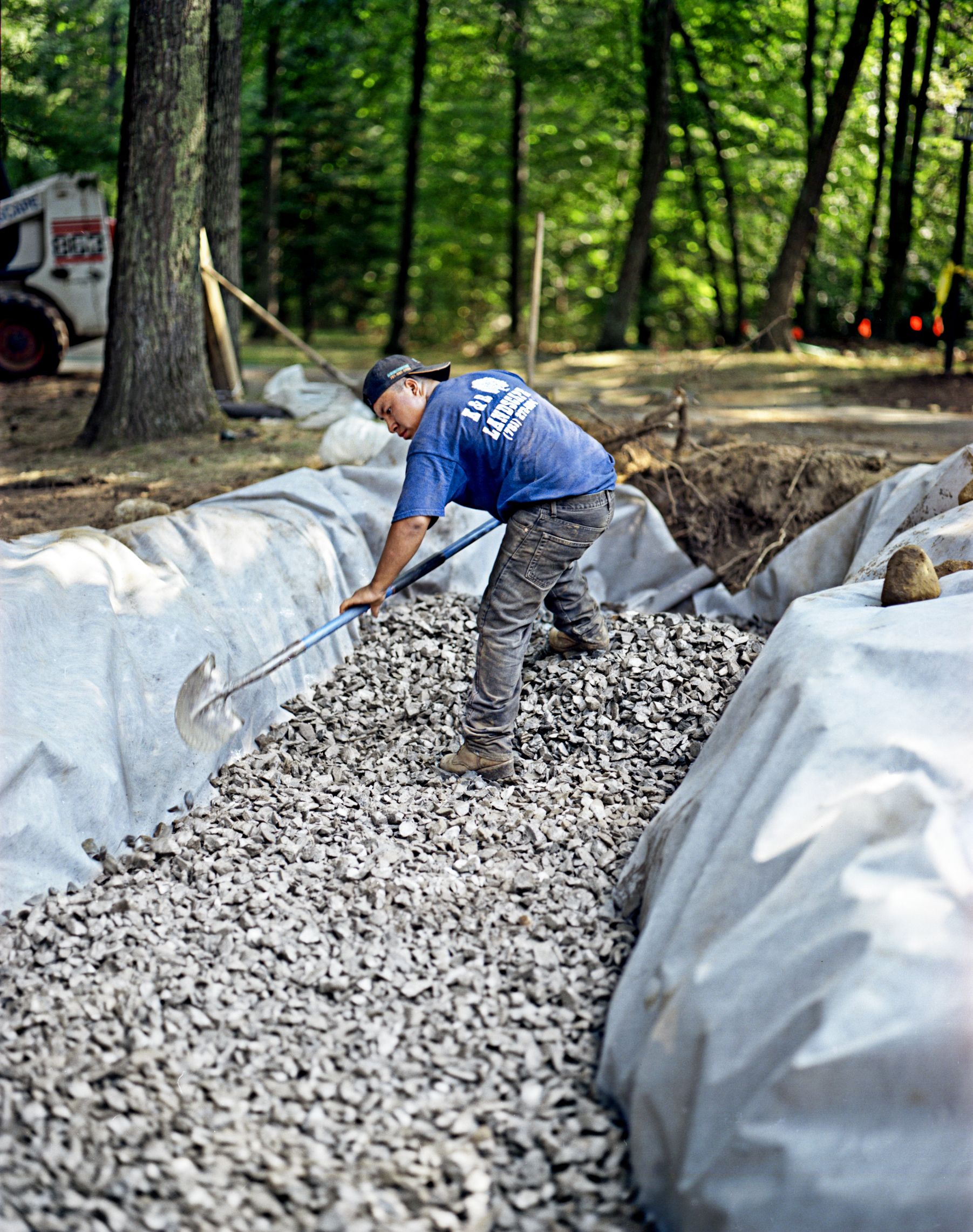
Laying the First Course for a Stone Wall
Set the Corner Stones
About a foot beyond each end of a straight wall section, drive two stakes, separated by a distance equal to the width of the wall. Place the cornerstones at each end of the wall. Use a mason’s line set just above grade to make sure the stones are aligned properly. The face of each stone should graze the line, creating a straight edge for your wall.
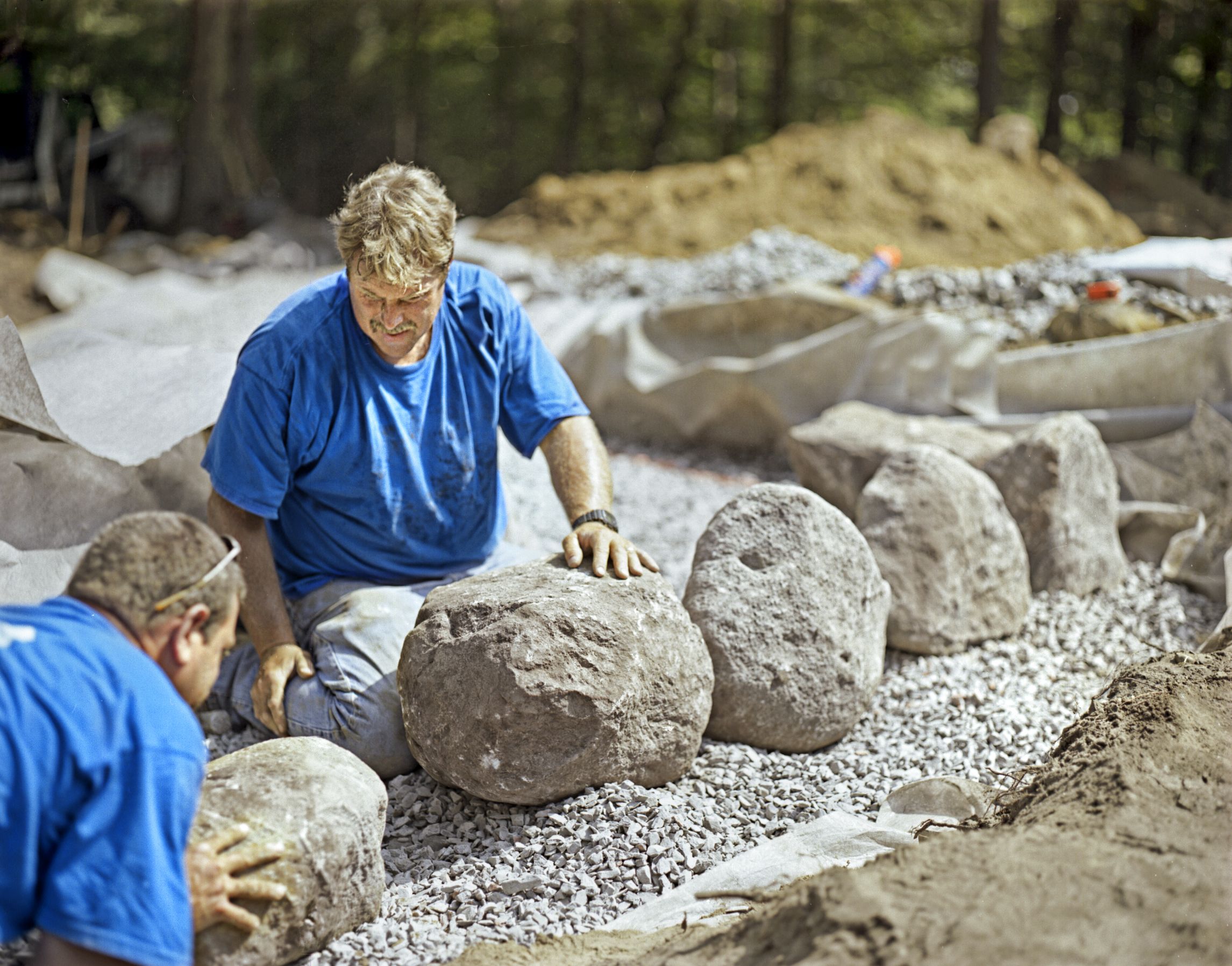
Establish a Level Base
Work from the corners inward, placing face stones along both sides of the wall. Fill the space between with smaller stones, ensuring they’re flush with the tops of the face stones. Use a level to check that the first course is even across its entire length. Once satisfied, apply a bed of mortar over this course to prepare for the next layer.
Using Mortar Effectively
Apply mortar to the top of the previous course before setting each new stone. Use a trowel to spread an even layer, then press the stone firmly into place. Scrape away any excess mortar that squeezes out, especially on the face of the wall. For a natural look, ensure that the visible edges of face stones rest on stone, not mortar.
Building Up the Stone Wall
Stagger the Joints
With the foundation and first course in place, you can begin building the wall upward. As you add subsequent courses, stagger the vertical joints to increase the wall’s stability. This means that each stone should bridge the joint between two stones below it. Dry-fit each stone before applying mortar to ensure a good fit and proper staggering.
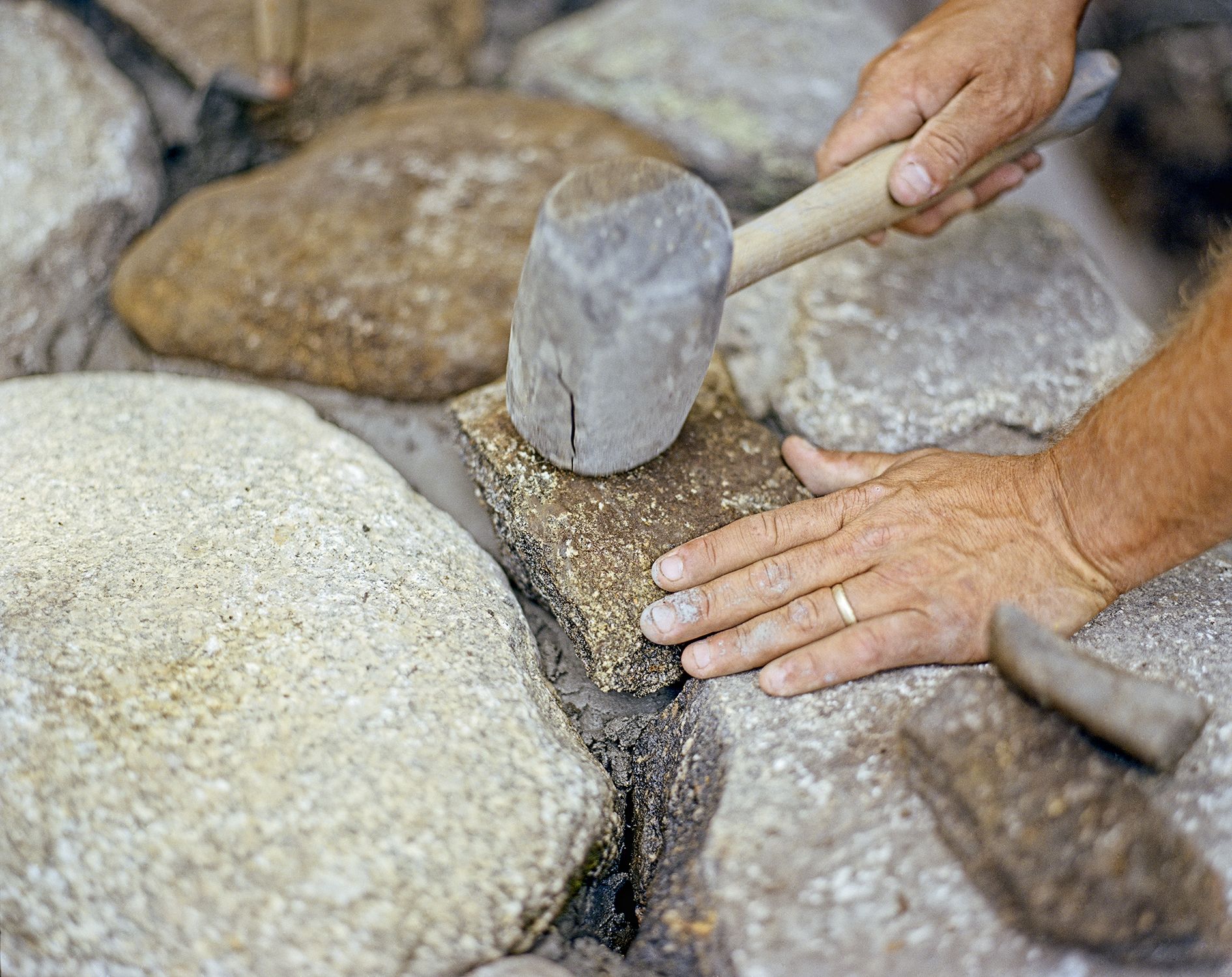
Cutting and Shaping Stones
Mark Stones for Cutting
Occasionally, you’ll need to cut stones to fit properly within your wall. Use a wax pencil to mark the sections of stone you want to remove. Aim to keep joints tight, ideally less than 1 ½ inches wide. Clear markings will guide your cuts and help maintain the wall’s even look.
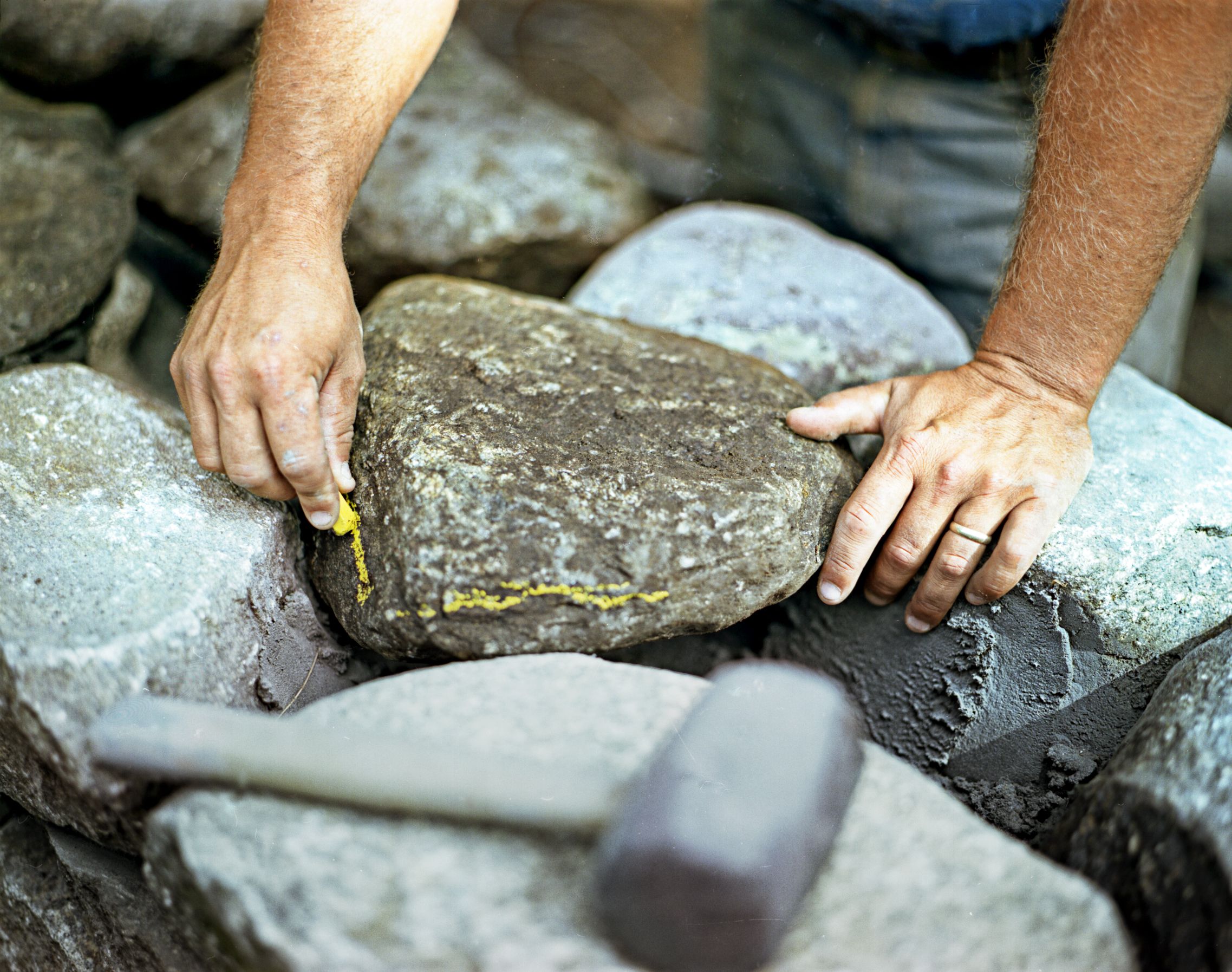
Safe Stone Cutting Techniques
To cut a stone, place it waste-side down on the ground. Position your carbide chisel on the marked line, angling it slightly downward. Strike the chisel once with your hand sledge, then reposition it so that half the blade is on the scored line and half on fresh stone. Continue this process until the waste piece breaks off. Always wear safety glasses when cutting stones to protect your eyes from flying debris.
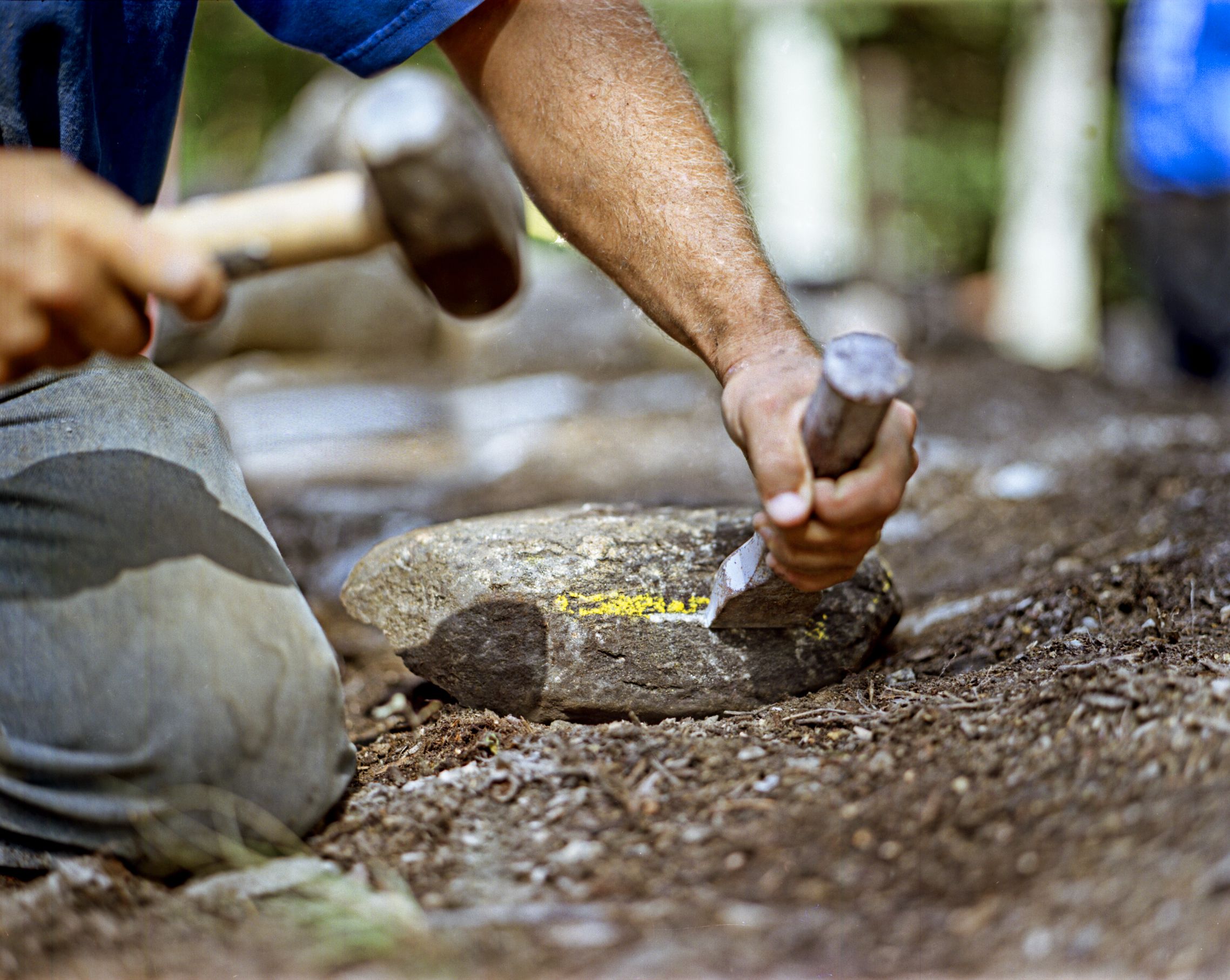
Adding Structural Support to Your Wall
Install Tie-Back Stones
For taller walls or those subject to significant pressure, additional support may be necessary. Every few courses, incorporate tie-back stones that extend deeper into the wall’s core. These longer stones help bind the front and back faces of the wall together, increasing overall stability.
Reinforce Taller Walls
For walls that will be taller than average, consider using reinforcement techniques such as geogrid or steel rebar. These materials can be layered between courses to provide additional strength and prevent bulging or collapse.
Finishing Touches for a Stone Wall
Cap the Wall
Select flat, wide stones for the top course to serve as capstones. These should overhang the wall slightly on both sides to direct water away from the structure. Set these capstones in mortar, ensuring they’re level and securely bonded to the course below.
Tool the Joints
Once the mortar has begun to set but is still pliable, use a jointing tool to create slightly concave joints between stones. This improves the wall’s appearance and helps channel water away from the mortar, prolonging the wall’s life.
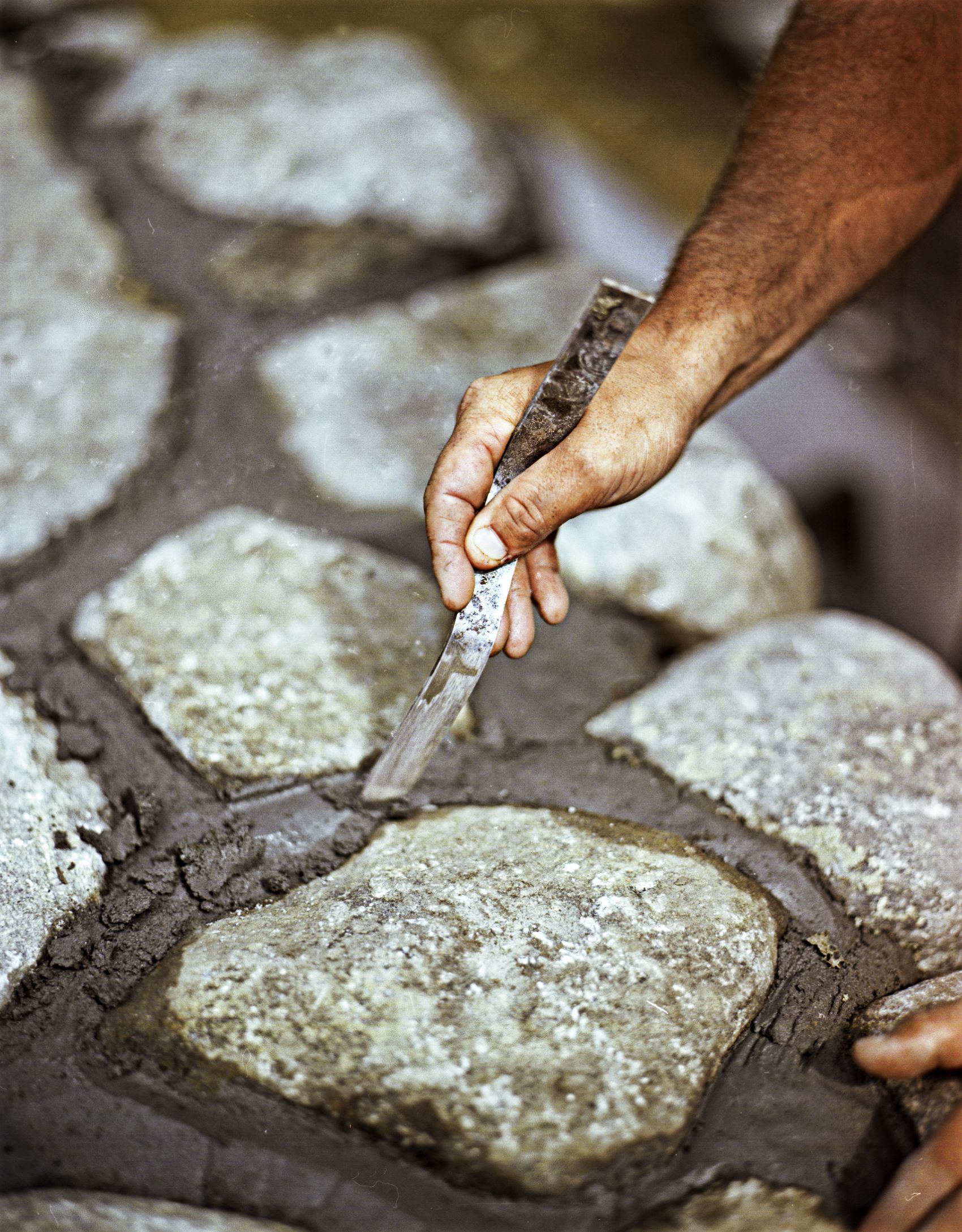
Adding Landscaping Elements to a Stone Wall
You can further improve the beauty and functionality of your stone wall by incorporating landscaping elements that complement its design. This includes selecting plants, mulching, and lighting to further enhance your hard work.
Choosing Plants
Select plants that thrive in your climate and complement the natural look of your stone wall. Consider perennials, shrubs, and flowers that will add color and texture throughout the year. Ensure plants are spaced appropriately to allow for growth and proper maintenance.
Mulching Around the Wall
Apply a layer of mulch around the base of the wall to help retain moisture and suppress weeds. Mulch also adds a finished look to your landscaping while protecting the base of the wall from erosion.
Installing Landscape Lighting
Consider installing low-voltage landscape lighting to highlight your stone wall at night. Uplighting or downlighting techniques can create dramatic effects, emphasizing the texture and form of the stones.
Maintaining Your Stone Wall
Inspect your wall annually, particularly after severe weather events. Look for signs of shifting, bulging, or cracking. Address any issues promptly to prevent more extensive damage.
For minor repairs, repoint loose mortar joints using a mortar mix that matches the original. For more significant damage, you may need to disassemble and rebuild sections of the wall, ensuring proper alignment and stability.
Common Challenges and Solutions with Stone Walls
Dealing with Uneven Terrain
When building on a slope, create a level foundation by stepping the base of the wall. Each section should be level, with steps occurring at natural breaks in the wall’s design.
Addressing Drainage Issues
Proper drainage is critical for the longevity of your stone wall. Install a perforated drain pipe behind the wall’s base and use gravel backfill to facilitate water movement away from the structure.
Our Conclusion
Building a stone wall is a labor-intensive but highly rewarding project that can dramatically enhance your property’s looks and functionality. By taking the time to plan and execute each phase carefully, you can create a durable, beautiful stone wall that will stand the test of time.
Remember that patience and attention to detail are key throughout the process. While it may be tempting to rush, taking the time to select the right stones, ensure proper alignment, and allow mortar to cure fully will result in a stronger, more attractive wall. With proper care and maintenance, your stone wall will last for generations.
